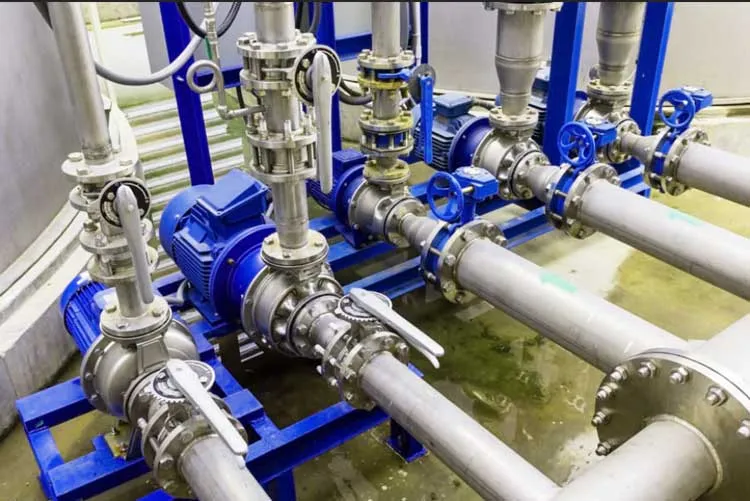
Hot water recirculation pumps are innovative devices that provide instant hot water by continuously circulating water through the plumbing system. Many homeowners wonder if these pumps can be installed under the sink for added convenience. In this article, we will explore the benefits, considerations, and steps involved in installing hot water recirculation pumps under the sink.
Benefits of Under-Sink Installation
Instant hot water availability: Installing a recirculation pump under the sink ensures that hot water is readily available at the point of use. No more waiting for the water to heat up, resulting in time and energy savings.
Water conservation: With a recirculation pump, there is no need to let the water run until it reaches the desired temperature. This helps reduce water wastage, making it an environmentally friendly choice.
Energy efficiency: By eliminating the need to run water for extended periods, recirculation pumps conserve energy by reducing the amount of water that needs to be heated.
Space-saving advantages: Installing the pump under the sink maximizes the use of available space. It eliminates the need for additional plumbing lines or bulky installations elsewhere in the home.
Convenience and ease of use: Having the pump under the sink allows for easy access and control. It is convenient to operate and adjust the temperature settings as needed.
Considerations for Under-Sink Installation
Plumbing configuration and compatibility: It is essential to ensure that the plumbing system is compatible with the installation of a recirculation pump under the sink. Existing pipes, valves, and connections should be assessed to determine if any modifications are necessary.
Power source availability: Under-sink installations require a power source for the recirculation pump. It is important to check if there is an electrical outlet nearby or explore alternative power options, such as battery-operated pumps.
Space constraints and accessibility: The available space under the sink should be evaluated to ensure that it can accommodate the pump and related plumbing connections. Accessibility for installation and future maintenance should also be considered.
Noise considerations: Some recirculation pumps can generate noise during operation. It is important to choose a pump model known for its quiet performance, especially if the sink is located in a frequently used area.
Installation complexity and requirements: Under-sink installations may require specific plumbing skills and tools. In complex plumbing scenarios, it is recommended to seek professional installation to ensure proper setup and avoid potential issues.
Steps for Under-Sink Installation
Pre-installation preparations: Assess the plumbing system’s compatibility and determine if any modifications are needed. Check the availability of a nearby power source or explore alternative options. Gather the necessary tools and materials for installation.
Installation process: Mount the recirculation pump securely under the sink, ensuring proper placement and clearance. Connect the pump to the existing plumbing lines, following the manufacturer’s instructions. Wire the pump to the power source, ensuring proper electrical connections. Insulate and prevent leaks in the plumbing connections.
Post-installation considerations: Test the system for proper functionality, ensuring that hot water is readily available at the sink. Adjust the temperature settings and controls as desired. Implement a regular maintenance routine, including checking for leaks and ensuring proper pump operation.
Potential Challenges and Solutions
Limited space under the sink: If space is a constraint, consider using compact and space-saving pump models. Additionally, adjusting plumbing configurations, if possible, can help optimize the available space.
Noise concerns: To address noise concerns, select a recirculation pump known for its quiet operation. Implement sound-dampening techniques such as insulation or utilizing noise-reducing materials to minimize any noise transmission.
Power source limitations: If an electrical outlet is not conveniently located, explore alternative power options such as battery-operated recirculation pumps. Consult with an electrician to determine the most suitable power source solution for your specific installation needs.
Conclusion
Installing a hot water recirculation pump under the sink offers several benefits, including instant hot water availability, water conservation, energy efficiency, space-saving advantages, and convenience. However, it is crucial to consider plumbing compatibility, power source availability, space constraints, noise concerns, and installation complexity. Seeking professional assistance, especially for complex plumbing scenarios, ensures a proper and hassle-free installation. By exploring under-sink installation options for hot water recirculation pumps, homeowners can enhance their water heating efficiency and enjoy the convenience of instant hot water at their fingertips.
Leave a Reply